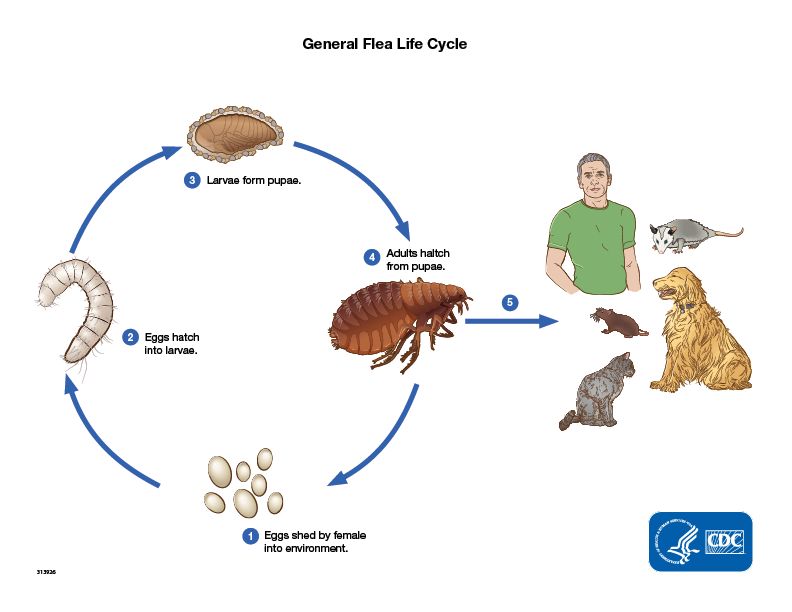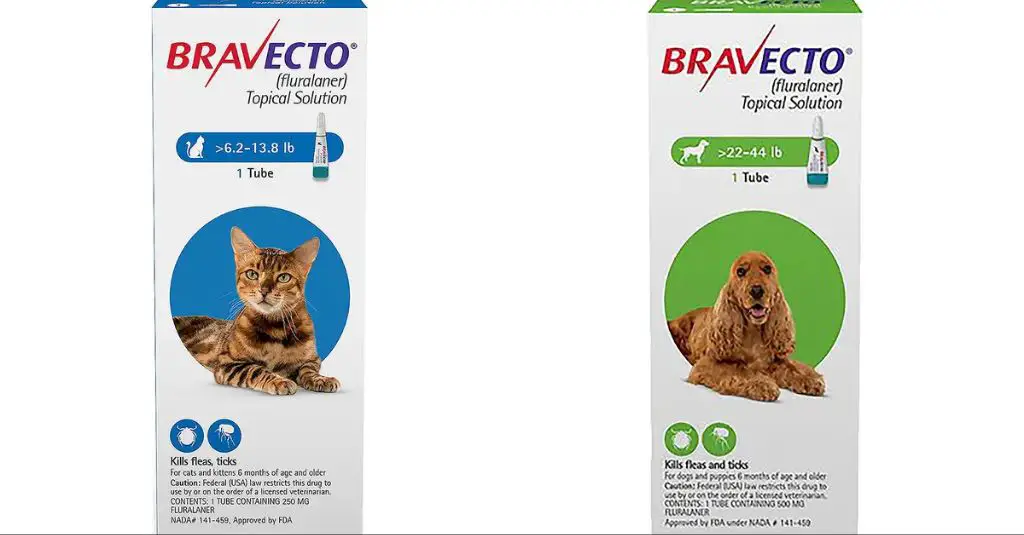The Frustrating Reality of Flea Infestations
Flea infestations can be extremely difficult to fully eliminate. Even after aggressive treatments, fleas have a tendency to persist and seem impossible to get rid of. This is often because fleas are able to lay eggs that can survive treatment and then hatch into new fleas. The flea life cycle allows populations to rebound quickly.
Successfully getting rid of a flea infestation requires attacking all stages of the flea life cycle. Flea eggs and larvae can be resistant to many common pesticides. Killing only adult fleas is often not enough, as immature fleas may survive to become breeding adults within weeks.
For this reason, flea infestations frequently require multiple, thorough treatments over an extended period of time. It’s important to be patient and persistent when trying to eliminate fleas. Just because fleas remain after an initial treatment does not mean that treatment has failed. Completely clearing an infestation can take 4-8 weeks or longer.
Understanding the challenges of the flea life cycle helps set proper expectations. Flea infestations can feel never-ending, but a diligent, multi-pronged approach over time can successfully eliminate flea populations and prevent reinfestation.
Understanding the Flea Life Cycle
To control a flea infestation, it’s important to understand the flea life cycle. Fleas go through four stages: egg, larva, pupa, and adult. Adult fleas live on pets and feed on their blood. The adults then lay eggs, which fall off into the environment – usually bedding, carpets, and areas where pets sleep and rest.

The eggs hatch into larvae, which feed on organic debris. The larvae then pupate, forming a protective cocoon. After 1-2 weeks, adult fleas emerge from the cocoon. The entire life cycle can range from 2 weeks up to 6 months, depending on environmental conditions.
This means fleas can reinfest again and again from eggs and larvae in the home. Treating only the pet is not enough. To fully break the flea life cycle, you must treat the home environment as well as all pets in the household with flea control products.
Trying Over-the-Counter Flea Treatments
When faced with a flea infestation, many pet owners turn to over-the-counter flea treatments purchased from their local pet store or supermarket. There are a wide variety of OTC flea collars, sprays, shampoos, powders, and other products marketed to kill fleas and end an infestation.
While these affordable, readily-available products promise to kill fleas, they often fall short of completely eliminating an existing flea problem. OTC flea treatments may kill some of the adult fleas on your pet, but they generally don’t last long enough or adequately break the flea life cycle to rid your home of an infestation.
It’s important to carefully follow label directions when using any over-the-counter flea product on your pet. But even with proper use, most OTC treatments require repeat applications and should be combined with other flea-fighting measures to fully remove an infestation from your pet and home.
Relying solely on over-the-counter flea treatments rarely succeeds in ending a significant flea problem. Pet owners need to be prepared to take additional steps if OTC products don’t seem to be working.
Getting Veterinary Flea Medications

If over-the-counter flea treatments haven’t solved the problem, the next step is to make an appointment with your veterinarian. Prescription flea medications available through veterinary clinics are often more effective than OTC options you can buy at the store or online.
Veterinary flea medications frequently contain special insect growth regulator (IGR) ingredients that kill flea eggs and larvae. This stops the flea life cycle and prevents future generations from developing. Common prescription flea preventatives from vets include:
- Oral tablets like Nexgard, Bravecto, or Simparica that provide systemic protection
- Topical spot-ons like Frontline, Advantage, or Revolution that are applied to the skin
- Collars like Seresto that provide continuous slow-release prevention
It’s important to note that prescription flea medications still take time to fully work. They don’t kill every flea immediately. It often requires multiple applications over weeks or months to break the flea life cycle. Be patient and keep using the veterinary flea medication as directed. In severe infestations, your vet may recommend combining multiple products for the best results.
Treating the Home Environment
Fleas don’t just live on your dog, they also infest areas where your dog spends time like carpets, furniture, bedding and more. You’ll need to treat these areas thoroughly to fully get rid of a flea infestation. Be prepared for this process to take diligence and patience.
Start by vacuuming all carpeting, rugs, and floors that your dog frequents. Use a vacuum with a hose and crevice tool to get into corners, baseboards, and crevices where fleas may be hiding. It’s best to vacuum daily during a flea infestation, and be sure to throw away the vacuum bag or empty the canister outside immediately after.
Wash all dog bedding, including blankets, pillows, and bed covers, in hot soapy water. For areas your dog spends time on like furniture and dog crates, use sprays or powders containing insect growth regulators, which stop flea eggs and larvae from developing into adults. Follow all label instructions closely.
Getting rid of all fleas in your home takes diligence. Expect the process to take several weeks at minimum as you treat, thoroughly clean, and prevent immature fleas from reaching adulthood. Be patient and persistent for the best chance of ridding your home of fleas.
Diatomaceous Earth for Flea Control
One natural option for controlling fleas is diatomaceous earth, a dust made from fossilized algae. This chalky powder is composed of tiny jagged particles that can cut into an insect’s exoskeleton, causing dehydration and death. When sprinkled in places fleas congregate, diatomaceous earth provides an effective mechanical way to kill fleas without toxic chemicals.

Diatomaceous earth can be applied to carpets, inside crevices, and anywhere fleas may be hiding and breeding, including pet bedding and sleeping areas. The fine powder works best if left in place for 12-72 hours before vacuuming up. It’s also important to thoroughly work the dust down into carpets and fabrics.
While diatomaceous earth is non-toxic, some precautions should be taken. Avoid breathing in the dust by wearing a mask when applying. Also keep pets and people out of treated areas until the dust settles. Diatomaceous earth may cause minor skin or eye irritation so wash hands after application. Overall, this natural mineral substance provides a chemical-free flea control option in the home.
Calling in Professional Exterminators
For severe flea infestations that have gotten out of control, calling in professional exterminators may be necessary. Professional exterminators have access to stronger pesticides that aren’t available over-the-counter, which can more effectively kill adult fleas as well as eggs and larvae.
Exterminators can treat both inside the home and outside in areas pets frequent, like the backyard, to fully break the flea life cycle across environments. Treatment usually involves initial spraying followed by follow-up treatments over the course of several months to catch new generations of fleas hatching from eggs.
While professional exterminators typically cost more than DIY treatments, they may be the best option for difficult infestations. Their knowledge, equipment and stronger insecticides can eliminate fleas in places owners can’t reach themselves. For serious flea problems, professional exterminators can get the job done quickly and effectively.
Preventing Reinfestation
Prevention is the best medicine when it comes to flea control. The most important thing is to treat your pets year-round with veterinarian-recommended flea prevention even if you don’t see any fleas. Flea medications like Frontline, Advantage II, Nexgard, Bravecto or Seresto collars work by killing fleas before they can lay eggs. Without new eggs, you’ll break the flea life cycle.
In addition to medicating pets, be diligent about washing all pet bedding frequently and vacuuming areas where your pets sleep and play. The vibration and heat from vacuuming can kill flea eggs and pick up debris that contains flea feces and eggs. Remember to empty the vacuum bag or canister outside after use.
You’ll also want to keep your lawn mowed short and minimize any standing water in the yard, as fleas thrive in moist environments with tall grass. With diligence on prevention, you can avoid dealing with another frustrating flea infestation.
When to See a Vet for Flea Problems
If over-the-counter flea treatments haven’t been effective after 2-3 weeks of consistent use, it’s time to make an appointment with your veterinarian. Fleas can quickly multiply into infestation levels, so persistent flea problems need professional attention.
Signs of flea allergy dermatitis like excessive itching, hair loss, scabs, and red irritated skin also warrant a vet visit. Your dog may need prescription flea prevention and medications to manage an allergic response to flea bites.
Tapeworms are another reason to seek veterinary care for flea issues. Tapeworms are transmitted to pets when fleas are ingested during self-grooming. Tapeworm segments may be visible around your dog’s hindquarters or in their stool. A vet can provide deworming medication and ongoing flea prevention to break the tapeworm cycle.
Rather than continuing to struggle with DIY flea treatments, a veterinarian can thoroughly examine your pet, diagnose the extent of the problem, and provide effective prescription flea and tick control. They can also rule out any underlying problems making your dog more susceptible to fleas.
Staying Patient Through the Process
Flea removal can be a slow, difficult process, and may require persistence and patience on your part. Even with effective treatment, it typically takes 2-3 months to fully clear an infestation. This is because fleas live in four life cycle stages – egg, larvae, pupae, and adult. No single treatment can kill all stages at once.
The key is sticking with the treatment plan recommended by your veterinarian. They will likely prescribe medication to kill adult fleas on your dog and recommend treatments for the home environment targeting eggs and larvae. You’ll need to be diligent with vacuuming, washing bedding, and applying environmental treatments to get developing fleas before they reach maturity.

It can feel frustrating to still see fleas after weeks of treatment, but try to remain patient. Getting rid of fleas requires breaking the life cycle at every stage. With persistence using vet-recommended methods, you can fully clear the infestation in a few months. Consistency is key – continue applying medications, washing and vacuuming, until your vet confirms the fleas are gone.